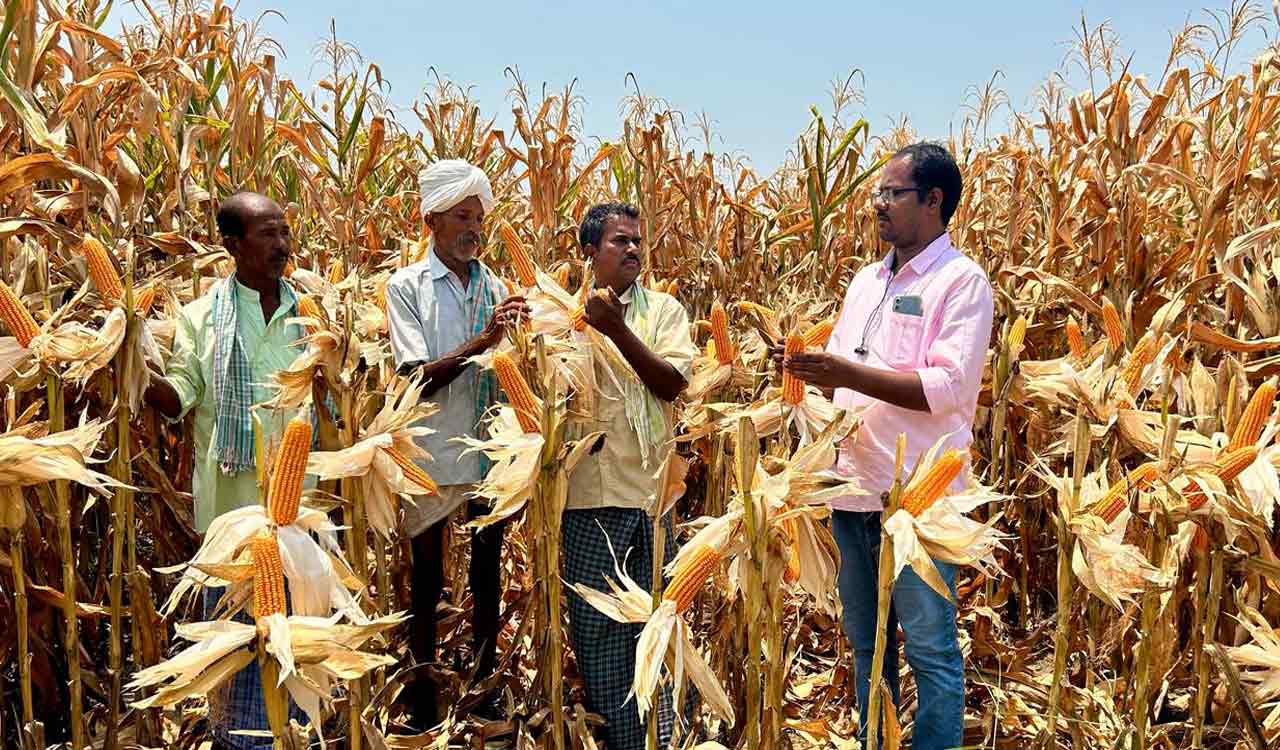Telangana: Farmers earn more profits on maize with zero tillage, sowing with hand-push seed drill in Siddipet

This zero-tillage technique allows the crop to utilise residual moisture from the previous paddy crop, saving them one to two irrigation cycles and reducing cultivation costs
Published Date – 28 April 2025, 08:16 PM
1. Farmer Devunuri Yadaiah gets bumper harvest with zero tillage cultivation, sowing with hand-push drill at Yellareddypet in Siddipet district. 2. Hand-push seed drill used for sowing maize.
Siddipet: Innovative practices in the agriculture sector yields better results to farmers. A few farmers, those who cultivated maize during the yasangi without tilling the land after cultivating paddy during vanakalam, were getting better results. The farmers were not only saving tiling charges but also getting better yields than the average farmer.
This zero-tillage technique would allow the crop to utilise residual moisture from the previous paddy crop, saving them one to two irrigation cycles and reducing cultivation costs. Additionally, zero-tillage cultivation does not disturb the soil, which promotes microbial growth that benefits plants. It contributes organic matter to the soil.
Moreover, farmers would face labour shortage during the sowing period. Generally, sowing one acre of maize would require six labourers to complete the task in a day, which can be burdensome for marginal farmers. This shortage often leads to late sowing, resulting in lower productivity.
To address this issue, Agriculture Extension Officer, T Nagarjun suggested that farmers in Yellareddypet village, such as Devunuri Yadaiah, use a hand-push seed drill for sowing. With this tool, Yadaiah and his wife were able to sow maize on an acre of land in just half a day.
Hand-push seed drills ensure accurate seed spacing, which leads to better germination rate and an impressive yield of 40 quintals per acre.
Furthermore, Yadaiah was able to reduce cultivation costs by six thousand rupees by minimising tillage and the need for hired labourers for sowing. Nagarjun said that he was planning to encourage.
Usually, farmers would get 36 quintals of maize per acre. However, Yadaiah got 4 quintals more yield than an ordinary farmer. He got Rs 14,000 more profit than ordinary farmer because he saved Rs 6,000 investment with zero tilling and avoiding sowing charges, earning Rs 8,800 with four additional quintals of maize.








